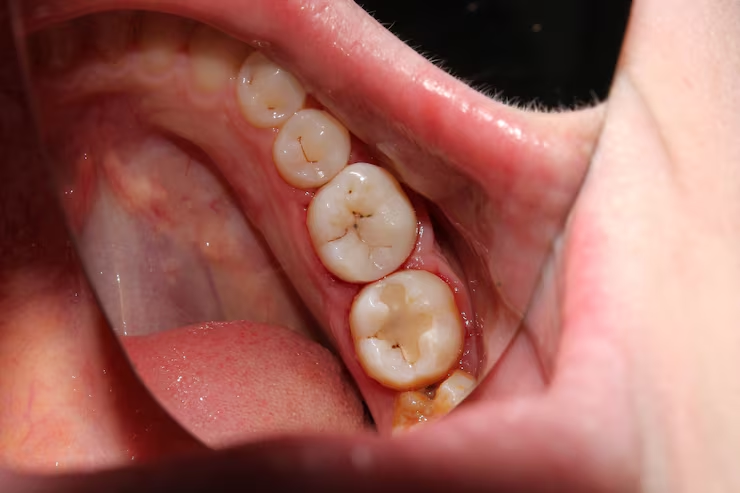Understanding Tooth Decay
Tooth decay, commonly known as a cavity, happens when the outer protective layer of the tooth (enamel) begins to break down. This damage is caused by acids produced when bacteria in the mouth feed on leftover sugars and carbohydrates. Over time, this process weakens the enamel, allowing bacteria to reach deeper layers of the tooth such as the dentin and pulp.

What Causes Tooth Decay?
- Sugary or starchy foods and drinks: Bacteria thrive on sugars and release acids that erode enamel.
- Poor oral hygiene: Skipping brushing or flossing allows plaque to accumulate on teeth.
- Low saliva flow: Saliva helps wash away food particles and neutralize acid — reduced saliva increases risk.
- Deep grooves or pits in teeth: These areas can trap food and bacteria more easily.
- Inadequate fluoride exposure: Fluoride strengthens enamel and protects against decay.
- Age factors: Children and older adults tend to be more prone to cavities.
- Certain medical conditions or medications: Some can dry out the mouth or increase sugar exposure.
Stages and Symptoms of Decay
The enamel starts losing minerals, showing as white spots.
The surface weakens and tiny holes begin to form.
The decay spreads beneath the enamel, often causing mild discomfort or sensitivity.
The inner nerve tissue becomes affected, leading to pain or infection.
Severe infection can cause abscesses and tooth loss if untreated.
Common signs include tooth sensitivity, pain when eating or drinking sweet or hot foods, visible holes, discoloration, or bad breath.
Prevention Tips
- Brush twice daily using fluoride toothpaste.
- Floss once a day to remove plaque between teeth.
- Limit sugary snacks and sweetened beverages.
- Rinse or drink water after meals to clear food particles.
- Visit your dentist every six months for professional cleaning and early detection.
- Ask about fluoride treatments or sealants for added protection.
- Avoid constant snacking — allow your mouth time to neutralize acids naturally.
Importance of Early Treatment
Catching decay in its earliest stage can save the tooth from major damage. Small cavities are often repairable with simple fillings.
However, if ignored, the infection may spread deeper — requiring root canal therapy, crowns, or even extraction. Treating tooth decay early is easier, more affordable, and helps preserve your natural smile.
to schedule an initial consultation & exam.
Your consultation will include an examination of everything from your teeth, gums and soft tissues to the shape and condition of your bite. Generally, we want to see how your whole mouth looks and functions. Before we plan your treatment we want to know everything about the health and aesthetic of your smile, and, most importantly, what you want to achieve so we can help you get there.
